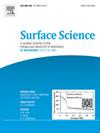Theoretical investigation of transition metal-doped CrSe₂ monolayer as a high-performance gas sensor for CO, SO₂, NO, and NO₂ detection
IF 1.8
4区 化学
Q3 CHEMISTRY, PHYSICAL
引用次数: 0
Abstract
This study investigates the adsorption and sensing properties of H-CrSe₂ monolayers doped with gold (Au) and silver (Ag) for detecting four toxic gases. First-principles calculations were performed to analyze the formation energy, structural changes, charge transfer, and density of states before and after gas adsorption. Meanwhile, molecular dynamics simulations at 300 K confirmed the stability of Ag/Au-CrSe₂ materials at room temperature. The results show that the adsorption energies of Ag/Au-CrSe₂ for these four gases range between 0.5 eV and 1.2 eV, indicating that the doping of Ag and Au atoms enhances the material's performance while preventing excessive adsorption that could lead to prolonged recovery times. Additionally, under 2 % biaxial tensile strain, the recovery times of Ag/Au-CrSe₂ for these four gases were significantly reduced to below 2 seconds. This study supports the application of H-CrSe₂ materials as gas sensors in environmental monitoring and industrial emission control.

过渡金属掺杂CrSe₂单层作为CO、SO₂、NO和NO₂检测的高性能气体传感器的理论研究
本文研究了掺杂金(Au)和银(Ag)的H-CrSe₂单层膜对四种有毒气体的吸附和传感性能。利用第一性原理计算分析了气体吸附前后的地层能量、结构变化、电荷转移和态密度。同时,300 K下的分子动力学模拟证实了Ag/Au-CrSe 2材料在室温下的稳定性。结果表明,Ag/Au- crse 2对这四种气体的吸附能在0.5 eV ~ 1.2 eV之间,表明Ag和Au原子的掺杂提高了材料的性能,同时防止了过度吸附导致恢复时间延长。此外,在2%的双轴拉伸应变下,Ag/Au-CrSe 2对这四种气体的恢复时间显著缩短至2秒以下。本研究支持了H-CrSe₂材料作为气体传感器在环境监测和工业排放控制中的应用。
本文章由计算机程序翻译,如有差异,请以英文原文为准。
求助全文
约1分钟内获得全文
求助全文
来源期刊

Surface Science
化学-物理:凝聚态物理
CiteScore
3.30
自引率
5.30%
发文量
137
审稿时长
25 days
期刊介绍:
Surface Science is devoted to elucidating the fundamental aspects of chemistry and physics occurring at a wide range of surfaces and interfaces and to disseminating this knowledge fast. The journal welcomes a broad spectrum of topics, including but not limited to:
• model systems (e.g. in Ultra High Vacuum) under well-controlled reactive conditions
• nanoscale science and engineering, including manipulation of matter at the atomic/molecular scale and assembly phenomena
• reactivity of surfaces as related to various applied areas including heterogeneous catalysis, chemistry at electrified interfaces, and semiconductors functionalization
• phenomena at interfaces relevant to energy storage and conversion, and fuels production and utilization
• surface reactivity for environmental protection and pollution remediation
• interactions at surfaces of soft matter, including polymers and biomaterials.
Both experimental and theoretical work, including modeling, is within the scope of the journal. Work published in Surface Science reaches a wide readership, from chemistry and physics to biology and materials science and engineering, providing an excellent forum for cross-fertilization of ideas and broad dissemination of scientific discoveries.
 求助内容:
求助内容: 应助结果提醒方式:
应助结果提醒方式:


